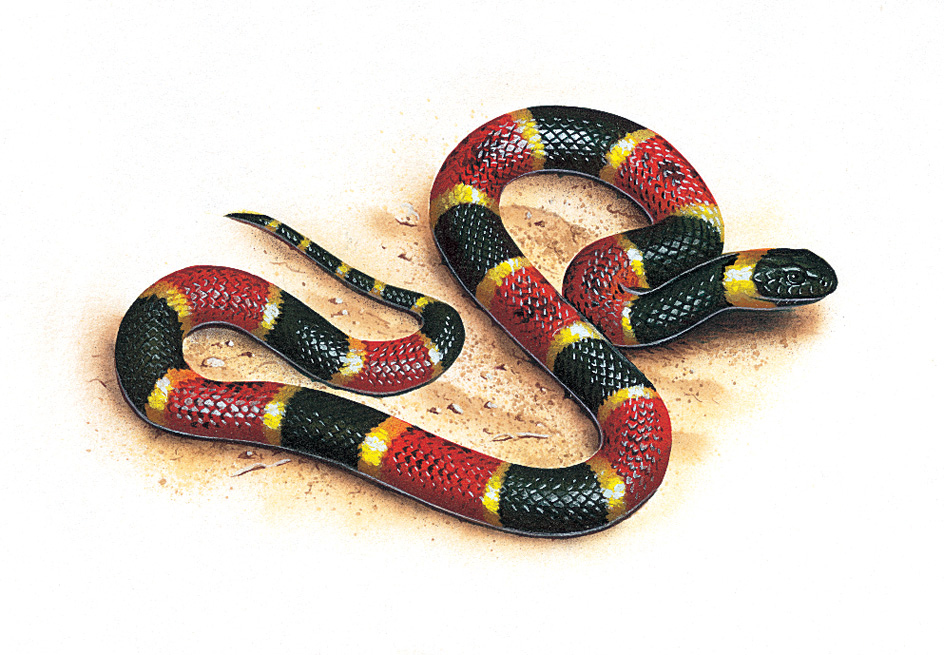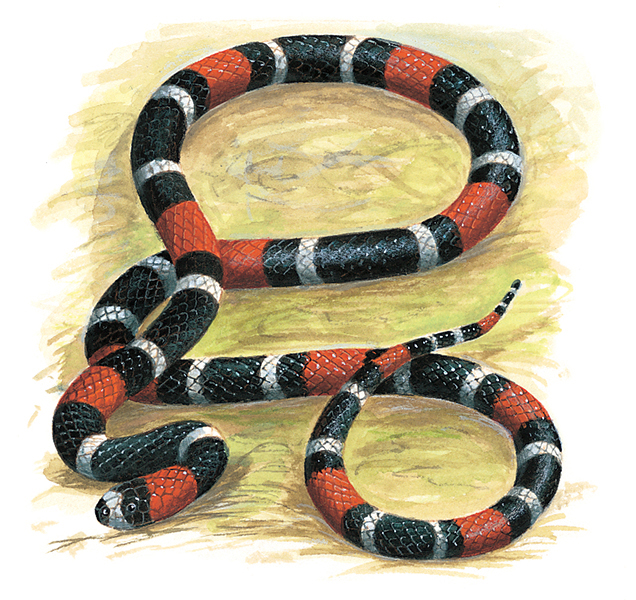Coral snake is a name given to certain venomous (poisonous) snakes that typically have bodies covered in brightly colored bands. Asian coral snakes, also called Oriental coral snakes, are found in Southeast Asia and India. New World coral snakes live in the southern United States, Mexico, Central America, and tropical South America. They have small, blunt heads and brightly colored bodies.
Coral snakes have powerful venom. They do not strike as effectively as vipers, but they can bite. They are dangerous if stepped on or handled.
The eastern coral snake generally ranges from 20 to 40 inches (51 to 100 centimeters) in length. It lives in the southeastern United States and in extreme northeastern Mexico. Its body is encircled by broad black and red bands separated by narrow yellow ones. Just behind the snake’s black snout is a wide yellow band followed by a black band. Some of these coral snakes are covered with black pigment that hides much of the red color. Some nonpoisonous snakes look like these coral snakes because they have similar coloring. But the coral snakes have red bands next to yellow ones. The harmless snakes have red bands next to black ones.

The western coral snake, or Arizona coral snake, is about 18 inches (46 centimeters) long. It lives in the lower parts of southern Arizona, in southwestern New Mexico, and in northern Mexico. It also has a black snout. Behind the snout is a white or yellow band followed by a red band.
The South American coral snake is about 4 feet (1.2 meters) long. It is common in tropical South America. Its body is encircled by bands of bright red separated by broad bands of black. Within each black band are two narrow bands of white or yellow. The white or yellow bands do not touch the red bands, a characteristic that distinguishes this snake from North American coral snakes. The scales of the snake are shiny and polished.

